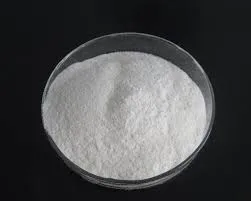
Dec . 11, 2024 08:33 Back to list
Optimizing Cement Adhesives with Advanced Additives for Enhanced Performance and Durability
The Role of Cement Adhesive Additives in Modern Construction
In the field of construction, the quality and durability of building materials are crucial for the longevity and safety of structures. Cement, as a primary component in construction, has constantly evolved to meet the demands of innovative designs and environmental challenges. One significant advancement in this arena is the development of cement adhesive additives, which have proven critical in improving the performance of cement-based products.
Cement adhesive additives are substances mixed with cement to enhance its adhesive properties, reduce the risk of cracking, improve workability, and increase resistance to environmental stressors. These additives allow for smoother application and better adhesion to various surfaces, making them essential for both residential and commercial construction projects.
One of the primary advantages of cement adhesive additives is their ability to improve the bond strength between different materials. In traditional construction, the interaction between cement and various substrates often results in weak points that can lead to failures over time. With the incorporation of adhesive additives, this bond is reinforced, ensuring that materials adhere more securely to each other, which is particularly beneficial in complex constructions involving multiple layers or dissimilar materials.
Moreover, cement adhesive additives have been developed to provide flexibility to cementitious materials, which helps in managing thermal expansion and contraction. This characteristic is critical in regions with temperature variations, where rigid structures are more prone to cracking. Additives such as latex emulsions provide the necessary elasticity, allowing the cement to accommodate movement without compromising structural integrity.
cement adhesive additive

In addition to enhancing physical properties, these additives also help in improving workability. When working with cement, especially in intricate designs, the ease of application can significantly affect the overall project outcome. Additives help to achieve a smoother consistency, enabling contractors to apply the material more uniformly, reducing the risk of defects and ensuring higher aesthetic quality.
The environmental impact of construction materials is becoming increasingly important. Cement adhesive additives can also address sustainability concerns by reducing water usage, energy consumption, and the overall carbon footprint. Some modern additives are designed to work effectively with lower water-to-cement ratios, which not only conserves water but also leads to stronger cured concrete. By optimizing the cement mix, industries can reduce the amount of raw material needed while maintaining performance standards.
Another vital aspect of cement adhesive additives is their role in enhancing the durability of products exposed to harsh environments. Certain additives provide resistance to moisture, chemicals, and even freeze-thaw cycles, making them suitable for outdoor applications. This durability is essential for structures like bridges, roads, and outdoor facades that face significant wear and tear over time.
The effectiveness of cement adhesive additives is not limited to their physical properties. They can also influence the setting time of cement, allowing for greater flexibility in construction schedules. For instance, additives can be formulated to accelerate curing times, which can be beneficial in situations where quick turnaround is needed, such as repairs or time-sensitive projects.
In conclusion, cement adhesive additives are integral to modern construction practices, offering a myriad of benefits that enhance the overall performance, durability, and sustainability of cement-based materials. As the construction industry continues to evolve, the use of advanced additives will play a pivotal role in meeting the growing demands for high-quality, durable, and environmentally friendly building solutions. With the ongoing research and development in this field, it is evident that cement adhesive additives will remain a key focus for innovators looking to push the boundaries of what is possible in construction.
-
Versatile Hpmc Uses in Different Industries
NewsJun.19,2025
-
Redispersible Powder's Role in Enhancing Durability of Construction Products
NewsJun.19,2025
-
Hydroxyethyl Cellulose Applications Driving Green Industrial Processes
NewsJun.19,2025
-
Exploring Different Redispersible Polymer Powder
NewsJun.19,2025
-
Choosing the Right Mortar Bonding Agent
NewsJun.19,2025
-
Applications and Significance of China Hpmc in Modern Industries
NewsJun.19,2025







